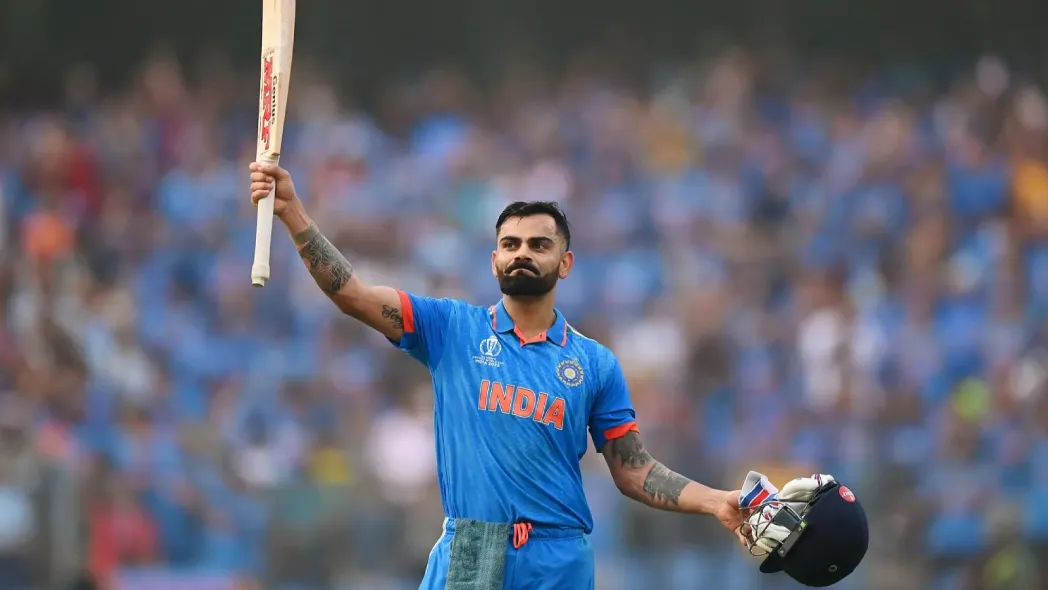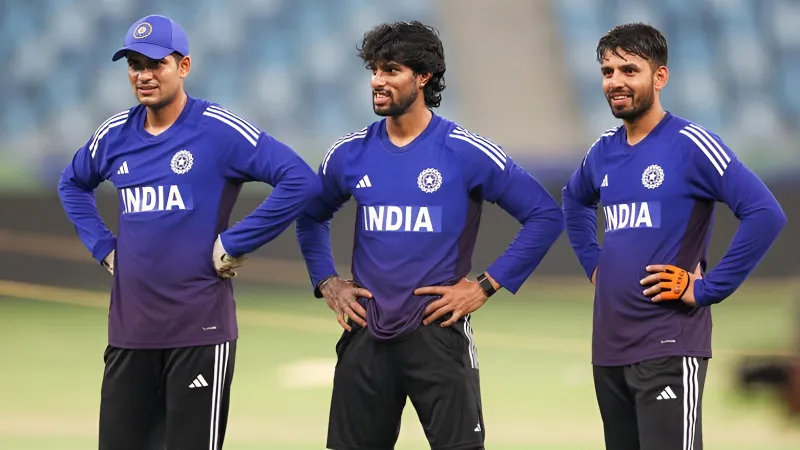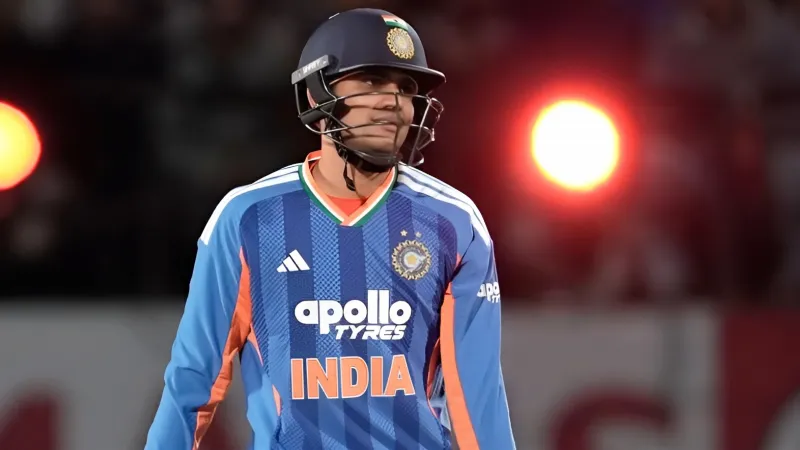Every Ranji season offers a couple of hundreds, a gritty five-for, maybe a cameo to spice things up. But this week? This week felt like the domestic equivalent of a Marvel crossover event everyone suddenly developed superpowers. We’re talking Paras Dogra hitting his 34th first-class hundred (yes, he’s basically a secret national treasure now), Meghalaya’s Akash Choudhary reinventing batting physics by blasting the fastest fifty in first-class history off just 11 balls, and eight consecutive sixes as if he was farming power-ups in a video game.
When Experience Turns into a Run Machine
 Paras Dogra
Paras Dogra
Paras Dogra’s 34th hundred wasn’t just another entry in a long list of achievements; it was a gentle reminder that some craftsmen peak long after the spotlight moves on. His ton, paired with Abdul Samad’s brisk 85, gave Jammu & Kashmir a 99-run lead over Delhi despite Simarjeet Singh’s excellent six-wicket haul. Dogra’s longevity raises a classic domestic cricket question: why do players like him dominate here but never get the national nod? It’s a debate resurrected every season, and Dogra keeps providing the evidence.
The Day Meghalaya Became a T20 Team in Whites
 Akash Choudhary
Akash Choudhary
Akash Choudhary’s 11-ball fifty, the fastest in first-class history, was outright surreal. Eight consecutive sixes, including a full set of six in an over off Limar Dabi, read like something cooked up in a club match, not a Ranji game. The knock wasn’t just entertaining; it signaled how modern batting intent has fully invaded India’s domestic circuit. Even the longest format can no longer escape the white-ball aggression mindset.
Middle-Order Grit That Shifted Momentum
 Rahul Radesh
Rahul Radesh
Rahul Radesh of Hyderabad, starting from 15, batted through the grind to get 129 and carry his side to 364. Rajasthan were stumbling at 117/5, but were helped out by a century partnership between Kunal Singh Rathore and Kukna Ajay Singh – a partnership based on stubborn resistance and not on fireworks. The result was a typical Ranji pattern – one side puts on the pressure, the other survives just long enough to put it back on.
Young Guns Making Noise at the Right Time
 Kumar Kushagra
Kumar Kushagra
The double century posted by Kumar Kushagra for Jharkhand was a personal milestone and a dagger in the back strategically. The 118-run stand with Sahil Raj saved the innings, enhanced the score to 506, and handed the game a firm foothold. Raj then got early wickets to finish off with a near-perfect all-round day. These are the performances the selectors bookmark.
Lower-Order Heroes Changing the Match Narrative
 Shivam Mavi
Shivam Mavi
The lower order often determines whether a team ends the day sulking or strutting, and this round proved it again. Bengal’s Sumanta Gupta (120) brought maturity beyond his maiden hundred, dragging his team to 474 before Suraj Sindhu Jaiswal’s 4-for ripped Railways to 97/5 by stumps.
Shivam Mavi, often more famed for his yorkers than his cover drives, scored a maiden century in 87 balls as U.P. soared to 535 for 6. Shams Mulani scored 69 for Bombay and added 75 for the ninth wicket with Tushar Deshpande, who then took two early wickets to leave H.P. at 94 for 7. “The tail must wag,” say teams. The tail growled this week.
Bowlers Who Reclaimed Control
 Shreyas Gopal
Shreyas Gopal
Shreyas Gopal broke Maharashtra’s 98-run opening stand and never stopped gnawing at the innings, ensuring Prithvi Shaw’s rapid 71 didn’t snowball into something monstrous. Sandeep Warrier’s four-for dragged Tamil Nadu to a tiny five-run lead, the kind of small advantage that feels priceless in tense first-class battles.
Siddharth Desai’s five-for for Gujarat, along with Nishunk Birla and Vishnu Kashyap’s combined seven wickets for Chandigarh, were perfect reminders that raw discipline can outshine batting theatrics. Even Jaydev Unadkat’s four wickets couldn’t prevent Kerala from carving out a 73-run lead, anchored by Rohan Kunnummal’s 80 and Baba Aparajith’s late-order 69.
India’s domestic cricket has always been vast, competitive, and brutally unforgiving. But this week showed something different: a generation of players refusing to be defined by labels, domestic stalwart, fringe talent, lower-order slogger, journeyman spinner. Dogra continues to defy time, Kushagra is charging into the future, and Akash Choudhary is rewriting batting logic altogether.
Key Takeaway
India’s domestic stars aren’t just performing, they’re redefining the limits of first-class cricket.
FAQs
- Which knock was the biggest headline-maker?
Akash Choudhary’s 11-ball fifty and eight consecutive sixes stole the round.
- Who delivered the most impactful bowling performance?
Siddharth Desai’s five-for and Shreyas Gopal’s momentum-breaking spell stood out.
- Why does this Ranji round matter?
It signals a shift toward fearless, hybrid cricketers ready for higher honours.
Disclaimer: This blog post reflects the author’s personal insights and analysis. Readers are encouraged to consider the perspectives shared and draw their own conclusions.
Step into the world of cricket with JeetBuzz News—where expert opinions, trending Blogs, and behind-the-scenes insights meet all your favorite topics. Stay informed, stay entertained, and never miss the stories shaping the cricketing world—only on JeetBuzz News!































